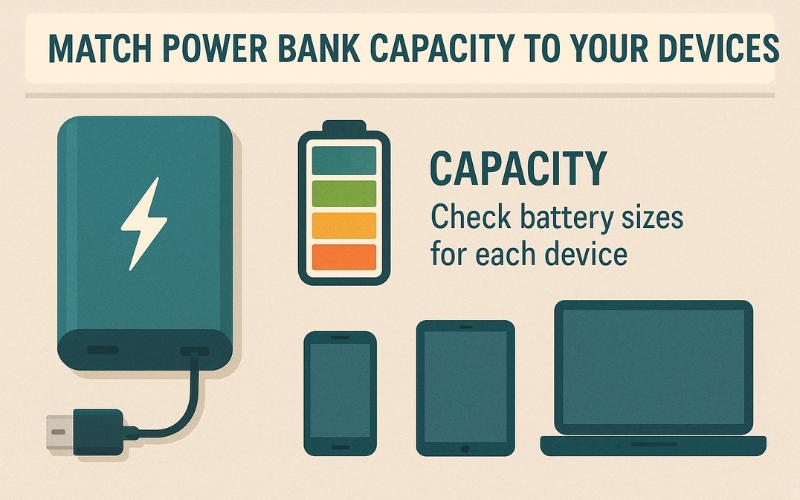How to Choose Right Power Bank
Choosing a power bank may seem simple at first glance after all, it’s just a device that charges your phone, tablet, or laptop on the go. However, when you dive into the market, you’ll quickly realize there are countless options available. Different models come with a variety of capacities, features, charging speeds, port types, and even special technologies like wireless charging or solar recharging. Without the right knowledge, it’s easy to get overwhelmed and end up picking a power bank that either doesn’t meet your needs or is overpriced for what it offers.
That’s where a smart buying approach makes all the difference. This expert guide will break down how to choose the right power bank step-by-step, covering everything from capacity to safety features to brand trustworthiness. By understanding what truly matters before you buy, you’ll be able to make an informed decision and invest your money wisely in a power bank that suits your lifestyle perfectly.
Understand Why You Need a Power Bank
Before buying, clarify your primary need. Power banks aren’t just for travelers anymore they fit different lifestyles:
- Daily Use: For work, school, or casual social life where a single phone recharge is needed.
- Travel & Adventure: For frequent flyers, campers, or hikers who need multiple charges.
By understanding your usage habits, you avoid overspending on unnecessary features.
Know the Key Specifications
The two most important specifications you should check are:
- Capacity (mAh): Indicates how much charge the power bank can store.
- Output Power (W or A): Determines how fast it can charge your device.
Higher isn’t always better, it should match your device’s requirements for efficiency and longevity.
Match Power Bank Capacity to Your Devices
Here’s a simple table for choosing capacity:
| Device | Recommended Capacity |
| Smartphone | 5,000–10,000 mAh |
| Tablet | 10,000–20,000 mAh |
| Laptop | 20,000–30,000+ mAh |
| Smartwatch/Earbuds | 2,000–5,000 mAh |

Pro Tip: Always buy a slightly higher capacity than needed because of energy loss during transfer (~30%).
Focus on Output Ports and Charging Speed
A good power bank has:
- Multiple USB Ports: Essential if you charge more than one device at once.
- Fast Charging Support: Look for technologies like Quick Charge 3.0 or Power Delivery (PD).
Example:
If your phone supports 18W fast charging, your power bank must have at least 18W output for optimal speed.
Check Portability and Size
Bigger capacity often means bigger size. Think about:
- Pocket-Friendly Models: Ideal for everyday carry (5,000–10,000 mAh).
- Backpack Chargers: Larger models (20,000+ mAh) are great for trips but heavier.
The right balance between power and portability depends entirely on your lifestyle.
Safety Features Are Non-Negotiable
Not all power banks are built with safety in mind. Make sure it includes:
- Overcharge Protection
- Short Circuit Protection
- Temperature Control

Some premium models even come with certifications like CE, FCC, and RoHS, ensuring global safety standards.
Don’t Ignore Build Quality and Design
Good build quality ensures longer lifespan and better durability:
- Material: Choose shock-resistant plastic or aluminum casing for travel.
- Indicators: LED battery indicators make it easier to monitor remaining charge.
It’s worth paying a little extra for a product that can survive accidental drops.
Brand Reputation and Warranty Matter
Stick to trusted brands like Anker, Xiaomi, Baseus, or Samsung.
They offer:
- Reliable customer support
- 1 to 2 years warranty
Cheaper, no-name brands may save you money initially but often fail within months costing you more in the long run.
Price Comparison: What Should You Pay?
Here’s a quick guide to fair pricing:
| Capacity Range | Average Price Range |
| 5,000–10,000 mAh | $10–$30 |
| 10,000–20,000 mAh | $20–$50 |
| 20,000–30,000 mAh | $40–$100 |
Leave a reply